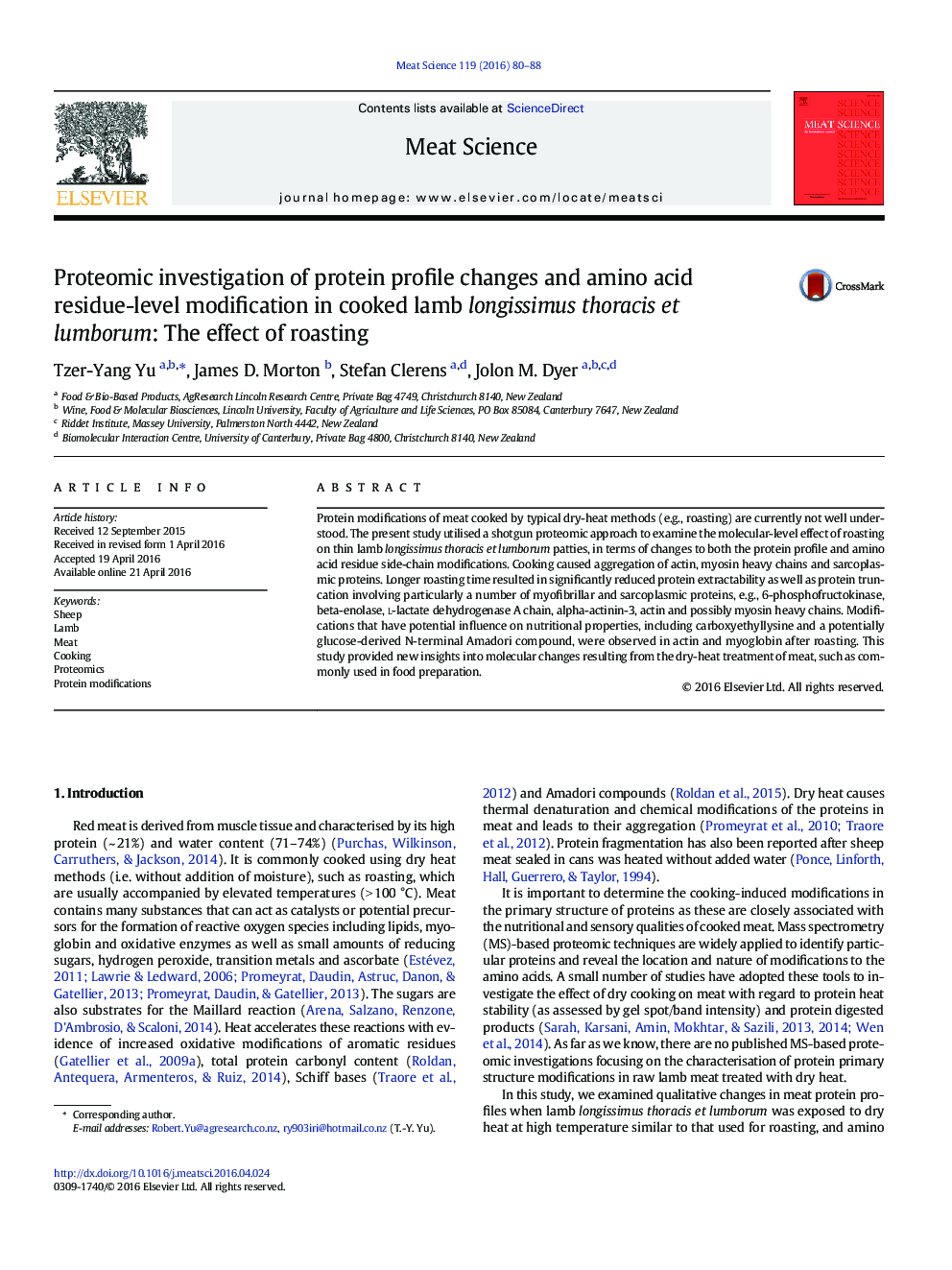| Article ID | Journal | Published Year | Pages | File Type |
|---|---|---|---|---|
| 2449369 | Meat Science | 2016 | 9 Pages |
•Shotgun proteomic evaluation of protein modifications in dry heat-treated lamb•Longer roasting reduced meat protein extractability in urea–thiourea solution•Longer roasting also resulted in protein truncation.•Some modifications that might influence nutritional properties, e.g., carboxyethyllysine, were observed after roasting.•Actin and myoglobin may provide peptides as potential markers of cooking in lamb meat.
Protein modifications of meat cooked by typical dry-heat methods (e.g., roasting) are currently not well understood. The present study utilised a shotgun proteomic approach to examine the molecular-level effect of roasting on thin lamb longissimus thoracis et lumborum patties, in terms of changes to both the protein profile and amino acid residue side-chain modifications. Cooking caused aggregation of actin, myosin heavy chains and sarcoplasmic proteins. Longer roasting time resulted in significantly reduced protein extractability as well as protein truncation involving particularly a number of myofibrillar and sarcoplasmic proteins, e.g., 6-phosphofructokinase, beta-enolase, l-lactate dehydrogenase A chain, alpha-actinin-3, actin and possibly myosin heavy chains. Modifications that have potential influence on nutritional properties, including carboxyethyllysine and a potentially glucose-derived N-terminal Amadori compound, were observed in actin and myoglobin after roasting. This study provided new insights into molecular changes resulting from the dry-heat treatment of meat, such as commonly used in food preparation.
